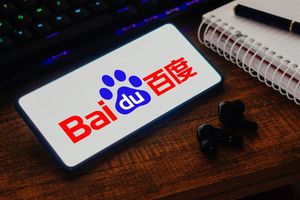The "U.S. Luxury Resale Market Research Report 2025-2030" report has been added to ResearchAndMarkets.com's offering.
The U.S. Luxury Resale Market was valued at USD 8.65 billion in 2024, and is projected to reach USD 13.04 billion by 2030, rising at a CAGR of 7.08%.
IMPACT OF TARIFF ON THE U.S. LUXURY RESALE MARKET
- Luxury goods, being non-essential purchases, are likely to experience a moderate impact from tariffs in the U.S. market. Initially, higher prices on imported luxury items may lead consumers to prioritize essentials, causing a temporary dip in luxury sales. However, demand for premium brands is expected to persist, with many consumers shifting toward the resale or secondhand market in search of more affordable alternatives.
- In the long run, tariffs driving up prices of new luxury items could significantly boost demand for pre-owned products, potentially increasing resale values and accelerating the market shift toward secondhand purchases. Although the U.S. luxury resale market may experience a short-term slowdown due to abrupt pricing adjustments, it is expected to regain momentum in the coming years as consumers adapt and seek cost-effective ways to access premium brands.
- A recent survey by ReturnPro supports this trend, revealing that 59% of American consumers would consider shopping secondhand for clothing and accessories if prices in the primary market continue to rise. This highlights a growing inclination toward budget-conscious purchasing behavior amidst economic pressure and shifting luxury preferences.
LUXURY RESALE MARKET TRENDS
Investing In Exclusivity and Rarity
Exclusivity is the cornerstone of value in the luxury sector, a concept that drives consumer demand and commands premium prices. The luxury second-hand market results from consumers' desire for distinctive, limited-edition products, sometimes unavailable through primary retail channels. The demand for rare goods is a major factor in resale platforms.
Collaborations Between Luxury Resale Platforms and High-End Fashion Brands
High-end fashion brands and luxury resale platforms have been collaborating, which reflects that they are adapting to changing consumer tastes. These collaborations strengthen the value and appeal of the brand as well as prolong the lifespan of luxury goods. For example, in 2023, thredUP and Luxury Handbag Reseller Rebag announced a partnership where Rebag customers can now resell gently-worn items on thredUP for Rebag shopping credit, and thredUP customers can shop select Rebag inventory directly on thredUP. By partnering with thredUP, Rebag is expanding the types of items its customers can send in. As part of the partnership, Rebag has launched a Clean Out program powered by thredUP's Resale-as-a-Service (RaaS), which enables the world's leading fashion brands and retailers to deliver customizable, scalable resale experiences to their customers.
Rise In Technology
Technology is playing a transformative role in shaping the luxury resale experience for customers. Technological innovations enhance the shopping experience and build customer trust in the market. In February 2025, Fashionphile debuted an augmented reality (AR) feature that allows customers to visualize products in their space before purchase. By enabling consumers to evaluate the way goods fit and look in their surroundings, this innovation enhances the online shopping experience and boosts consumer confidence when making purchases.
LUXURY RESALE MARKET ENABLERS
Millennials & Gen Z Influencing the Market
Millennials and Gen Z are major drivers of the U.S. luxury resale market. These generations are highly aware of the environmental impact of fast fashion and are more inclined to buy pre-owned luxury goods as part of their commitment to reducing waste and supporting sustainable practices. Most of the growth in the resale market has been driven by Gen Z shoppers looking for unique, economical, and sustainable buys.
Impact of Tariffs Driving the U.S. Luxury Resale Market
Tariffs are poised to increase the price of all sorts of goods, including apparel. The U.S. imports nearly all of its clothing and shoes from other countries, including from China, which is not exempt from the tariffs and now faces a rate of 145%. As rising tariffs continue to push up the prices of new apparel, consumers are actively seeking more affordable alternatives.
Rising Internet Penetration
The widespread internet access has facilitated the growth of online luxury resale platforms, enabling consumers to buy and sell pre-owned luxury items with greater ease. As of early 2024, the U.S. had approximately 331.1 million internet users, representing an internet penetration rate of 97.1% of the total population. High internet penetration is making it easier for individuals to browse, compare, and purchase luxury goods from the comfort of their homes.
Rising Demand for Sustainability
The U.S. luxury resale market is experiencing a significant shift towards sustainability, driven by evolving consumer preferences, economic factors, and industry innovations. Sustainability is becoming a more important consideration for customers, to lessen their influence on the environment, and more than half of these customers prefer to purchase used goods. With pre-owned luxury goods frequently costing 50-75% less than new ones, younger consumers want distinctive, premium products at more reasonable costs.
INDUSTRY RESTRAINTS
Challenges In Ensuring Authenticity
One of the key challenges in the U.S. luxury resale market is ensuring the authenticity of products. Counterfeit luxury goods can undermine trust in resale platforms and harm the reputation of brands. To address this, platforms like The RealReal and Poshmark are investing in sophisticated authentication processes, including expert appraisers, AI technology, and blockchain for traceability.
Unviable Growth of Secondhand Clothing
The rapid expansion of the second-hand clothing market raises concerns that it may weaken the primary market for new clothing. A significant decline in demand for new garments could increase production costs and slow innovation in textile manufacturing. This may also disrupt global supply chains, potentially limiting the future availability of high-quality second-hand items..
VENDOR LANDSCAPE
In the U.S. luxury resale market, The RealReal, ThreadUp, and eBay are the key players, collectively accounting for a significant percentage of the market share. It is a fragmented market where resale platforms operate with large vendors, creating intense competition and offering a wide variety of second-hand luxury products to meet diverse customer preferences and budgets.
Furthermore, to maintain a competitive edge, companies are increasingly focusing on improving service models, authentication processes, and digital user experiences to meet the evolving expectations of both sellers and buyers.
Key Company Profiles
- eBay Inc.
- The RealReal
- ThreadUp Inc.
Other Prominent Company Profiles
- 1stDibs.com, Inc.
- Farfetch
- Heritage Auctions
- Poshmark, Inc.
- Most Wanted Luxury Resale
- NET-A-PORTER
- Rebag
- Reloved Luxury
- The Luxury Closet
- Vestiare Collective
- WGACA (What Goes Around Comes Around)
- Ziniosa
- Vinted
- LePrix, Inc.
- Yoogi's Closet, Inc.
Key Attributes:
| Report Attribute | Details |
| No. of Pages | 114 |
| Forecast Period | 2024 - 2030 |
| Estimated Market Value (USD) in 2024 | $8.65 Billion |
| Forecasted Market Value (USD) by 2030 | $13.04 Billion |
| Compound Annual Growth Rate | 7.0% |
| Regions Covered | United States |
Key Topics Covered:
1. Scope & Coverage
2. Opportunity Pockets
3. Introduction
3.1. Impact of Tariffs
4. Market Opportunities & Trends
4.1. Investing in Exclusivity and Rarity
4.2. Collaborations Between Luxury Resale Platforms and High-End Fashion Brands
4.3. Rise in Technology
5. Market Growth Enablers
5.1. Millennials & Gen Z Influencing the Market
5.2. Impact of Tariffs Driving the Luxury Resale Market
5.3. Rising Internet Penetration
6. Market Restraints
6.1. Challenges in Ensuring Authenticity
6.2. Unviable Growth of Secondhand Clothing
7. Market Landscape
7.1. Five Forces Analysis
8. Product Type (Market Size & Forecast: 2021-2030)
8.1. Handbags
8.2. Clothing
8.3. Shoes
8.4. Small Leather Goods
8.5. Watches
8.6. Jewelry
8.7. Accessories
9. Gender (Market Size & Forecast: 2021-2030)
10. Distribution Channel (Market Size & Forecast: 2021-2030)
11. Geography (US)
12. Competitive Landscape
13. Competitive Overview
14. Key Company Profiles
15. Other Prominent Company Profiles
16. Report Summary
For more information about this report visit https://www.researchandmarkets.com/r/9lxr5w
About ResearchAndMarkets.com
ResearchAndMarkets.com is the world's leading source for international market research reports and market data. We provide you with the latest data on international and regional markets, key industries, the top companies, new products and the latest trends.
View source version on businesswire.com: https://www.businesswire.com/news/home/20250624250940/en/
Contacts
ResearchAndMarkets.com
Laura Wood, Senior Press Manager
press@researchandmarkets.com
For E.S.T Office Hours Call 1-917-300-0470
For U.S./ CAN Toll Free Call 1-800-526-8630
For GMT Office Hours Call +353-1-416-8900







